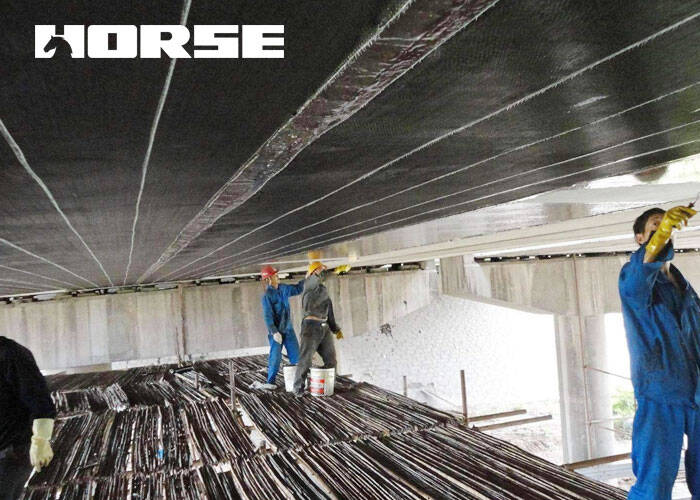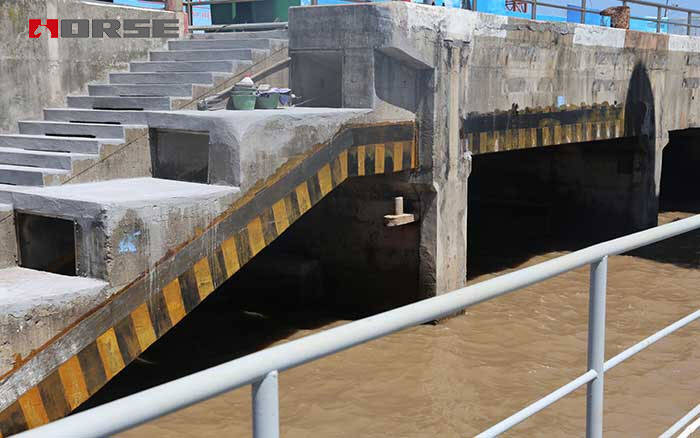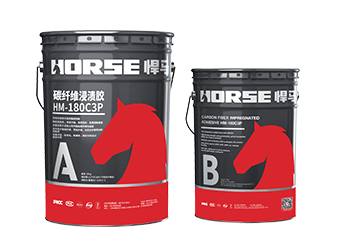Solutions
Horse Construction offers full range of structural strengthening materials with technical supports, documentation supports, products supports, project supports.
Carbon Fiber Strengthening System for Bridge Repair

1 The necessity research of carbon fiber strengthening reinforcement materials
1.1 Strategic needs
Regarding the reinforcement and repair technology of carbon fiber materials in concrete structures, in the early 1980s, developed countries such as the United States and Japan started to conduct experiments and research in this area, and they were quite mature. At present, the world's carbon fiber production is mainly concentrated in a few developed countries such as Japan, the United Kingdom, the United States, France, and South Korea. Three Japanese companies with acrylic fiber as their main products rely on their advanced spinning technology to form an advantage in the production of high-performance raw yarns, accounting for more than 75% of the world's output. In the late 1990s, my country began to study carbon fiber reinforcement technology, and began to be popularized and applied in the reinforcement of bridge engineering structures. However, compared with the international advanced level, there is still a certain gap. The overall development level is nearly 20-30 years behind. At present, 95% of my country's carbon fiber depends on imports. Scientific and technological strength is one of the main pillars of comprehensive national power. Only by occupying the commanding heights of technological development can we grasp the initiative. my country attaches great importance to the development of the carbon fiber industry. The national "863 Program" and relevant ministries and commissions are concerned about the development of my country's carbon fiber industry and the pace of its industrialization, and give strong support. In the "Twelfth Five-Year" development plan, high-tech fiber materials that are related to national industrial safety are the top priority. Carbon fiber is listed as the first. Relevant "973 Program" was also launched, which created unique conditions for the development of carbon fiber in my country.
1.2 The need to build a conservation-oriented society
At the project appraisal and acceptance meeting of "Research, Promotion and Application of Highway Old Bridge Inspection, Evaluation and Reinforcement Technology", leaders of the Ministry of Communications and participating experts spoke highly of this research. They believe that the research results have provided strong technical support for the smooth implementation of my country's road network optimization and reconstruction plans for dangerous bridges, reflected the scientific development concept of building a conservation-oriented industry, and promoted our construction of a low-carbon conservation-oriented society.
1.3 The needs of the development of science and technology
Bridge restoration projects have their own characteristics, providing a large amount of scientific data for scientific research. After years of systematic research, my country has basically established a series of standard specifications for in-service bridge inspection, repair and reinforcement, and formed a relatively complete practical technical system. The advancement of engineering materials and the emergence of new materials have always been the pioneers and driving forces of the development of civil engineering. The emergence of carbon fiber materials and their successful use in the reinforcement and reinforcement of civil engineering have brought the research of civil engineering reinforcement technology to a higher level.
2 Features
Carbon fiber material is a high-tech material that has been used in the field of civil engineering with the earliest, most mature technology and the largest amount. As an epoch-making reinforcement material, compared with traditional reinforcement materials, it has many irreplaceable advantages and characteristics. Carbon Fiber CarbonFiber, referred to as CF, is a new type of fiber material with a carbon content of more than 95% made from organic matrix fibers under an inert gas environment at a high temperature of 1000-3000 degrees Celsius by pyrolysis. It not only has the inherent characteristics of carbon materials, but also has the soft processability of textile fibers. It is a new generation of high-strength fiber materials. Due to its high strength, high modulus, low density, and low linear expansion coefficient, it is called the king of new materials. Internationally known as "black gold" and "third-generation material". Its specific gravity is less than 1,4 of steel, and its tensile strength is 7-9 times that of steel, and its tensile modulus of elasticity is also higher than that of steel. , And has strong acid and alkali resistance and corrosion resistance.
In recent years, the application of carbon fiber materials in the field of civil engineering has always been a research focus at home and abroad. The carbon fiber and composite material industry at home and abroad is in a period of rapid development, production technology and production efficiency have been significantly improved, and product costs have stabilized and declined. With the vigorous development of new technologies for reinforcing concrete structures with carbon fiber materials, it has been widely used in the construction industry.

3 Definition, principle, characteristics and scope of application of carbon fiber reinforcement
3.1 Definition
Carbon fiber reinforcement refers to the use of specially formulated adhesive resin or impregnated resin to stick carbon fiber materials on the surface of bridge concrete members that need to be reinforced. After the resin is cured, it forms a new force-bearing composite body with the original component, which works together to improve the bending and shear bearing capacity of the structural component.
3.2 Principle
Carbon fiber materials used for building structure reinforcement have good mechanical properties. Carbon fiber reinforcement must first make the carbon fiber filaments in the carbon fiber cloth have the same directionality and can work together. This is the necessary condition and key to reinforcement. After pre-impregnating carbon fiber with extremely high tensile strength with epoxy resin, it becomes a composite reinforcement material (unidirectional continuous fiber), which greatly improves the tensile strength of carbon fiber cloth. Then an epoxy resin adhesive is used to stick it on the component to be reinforced along the tensile direction or perpendicular to the crack direction to form a new composite body. The paste material and the original reinforced concrete work together to improve the force performance of the reinforced component, enhance the crack and shear resistance of the component, and achieve the purpose of reinforcement. Therefore, the binder plays a vital role in the reinforcement of carbon fiber cloth.
3.3 Features Bonding carbon fiber cloth composite material to reinforce the bridge, compared with pasting steel plate reinforcement, has the following advantages:
3.3.1 It is more convenient for Shaanxi, does not need to use large-scale reinforcement equipment, has high efficiency and fast construction speed.
3.3.2 can effectively seal cracks in concrete structures, delay or eliminate the appearance and expansion of cracks, and extend the service life of the structure.
3.3.3 No need to perforate, no new damage to the original structure.
3.3.4 After reinforcement, the size and shape of the original section will not be changed. The watch is light and beautiful.
3.3.5 Economical and durable, good reinforcement effect, no need for later maintenance.
3.3.6 Due to the excellent fatigue resistance of carbon fiber materials, the fatigue resistance of concrete structures reinforced with carbon fiber cloth will be improved.
3.3.7 The anti-corrosion is strong, the application is wide, the corrosion resistance and durability of the reinforced components are greatly improved, and it can be applied to the reinforcement of components in various complex working environments.
3. 3-8 The roughness of carbon fiber material is lower than the roughness of the concrete surface, which can improve the water flow capacity in the reinforcement section.
3.3.9 Improve the impermeability and erosion resistance of the reinforcement members.
4 Classification, comparison and development status of carbon fiber reinforced materials
4.1 Classification Carbon fiber materials include carbon fiber cloth and carbon fiber board. Carbon fiber cloth is a cloth-like product in which continuous carbon fibers are arranged in one or more directions without resin impregnation. Carbon fiber board is a plate-shaped product in which continuous carbon fibers are arranged in one or more directions and are impregnated and cured by resin.
4.2 Comparison of carbon fiber reinforced materials
4.2.1 In terms of construction, compared with carbon fiber cloth, carbon fiber board has the following advantages:
(1) The construction is convenient and the construction quality is easier to guarantee.
(2) The legs are high, a layer of 1.2mm thick plate is equivalent to 10 layers of carbon fiber cloth.
(3) Carbon fiber board is easier to keep the fiber straight than carbon fiber cloth, which is more conducive to the function of carbon fiber.
(4) Carbon fiber board is more suitable for pre-stressed reinforcement, and can give full play to the high strength of carbon fiber.
(5) Compared with fiber cloth, the broken dimension board is more suitable for the wall reinforcement of brick-concrete structure.
4.2.2 Compared with carbon fiber cloth, carbon fiber board has the following disadvantages:
(1) The fiber cloth has a wider application range and can be cut arbitrarily to reinforce structures of various shapes (circular or complex curved surfaces).
(2) It is expensive, which limits the application of carbon fiber board.
5 Concluding remarks
Carbon fiber strengthening materials have many unique properties and advantages, and the comprehensive economic and social benefits produced are good, have broad application prospects, and are worthy of vigorous promotion in bridge repair projects.
You can find anything here you are in need of, have a trust trying on these products, you will find the big difference after that.

High strength, unidirectional carbon fiber wrap pre-saturated to form a carbon fiber reinforced polymer (CFRP) wrap used to strengthen structural concrete elements.

Good impregnation carbon fiber adhesive for applying carbon fiber reinforced polymer(CFRP) wrap for structural strengthening

High strength carbon fiber reinforced polymer (CFRP) strip / laminate / plate for structural strengthening and concrete repair